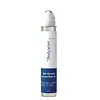What's inside
What's inside
 Key Ingredients
Key Ingredients

 Benefits
Benefits

 Concerns
Concerns

 Ingredients Side-by-side
Ingredients Side-by-side

Water
Skin ConditioningPropanediol
SolventButylene Glycol
HumectantPropylene Glycol
HumectantGlycerin
HumectantSodium Metabisulfite
AntioxidantLarix Europaea Wood Extract
HumectantGlycine
BufferingZinc Chloride
AntimicrobialCamellia Sinensis Leaf Extract
AntimicrobialTrigonella Foenum-Graecum Seed Extract
PerfumingDiaminopyrimidine Oxide
Skin ConditioningPisum Sativum Sprout Extract
Skin ConditioningPhenoxyethanol
PreservativeSodium Benzoate
MaskingPPG-26-Buteth-26
Skin ConditioningPEG-40 Hydrogenated Castor Oil
EmulsifyingApigenin
AntioxidantOleanolic Acid
Skin ConditioningBiotinoyl Tripeptide-1
Ethylhexylglycerin
Skin ConditioningTrifolium Pratense Extract
Skin ConditioningRosmarinus Officinalis Leaf Extract
AntimicrobialPanthenol
Skin ConditioningMoringa Oleifera Leaf Extract
Skin ConditioningEDTA
Arginine
MaskingLactic Acid
BufferingGlycine Soja Germ Extract
EmollientTriticum Vulgare Germ Extract
Skin ConditioningScutellaria Baicalensis Root Extract
AstringentGluconolactone
Skin ConditioningCalcium Gluconate
HumectantSerenoa Serrulata Fruit Extract
Skin ConditioningParfum
MaskingCI 19140
Cosmetic ColorantCI 42090
Cosmetic ColorantWater, Propanediol, Butylene Glycol, Propylene Glycol, Glycerin, Sodium Metabisulfite, Larix Europaea Wood Extract, Glycine, Zinc Chloride, Camellia Sinensis Leaf Extract, Trigonella Foenum-Graecum Seed Extract, Diaminopyrimidine Oxide, Pisum Sativum Sprout Extract, Phenoxyethanol, Sodium Benzoate, PPG-26-Buteth-26, PEG-40 Hydrogenated Castor Oil, Apigenin, Oleanolic Acid, Biotinoyl Tripeptide-1, Ethylhexylglycerin, Trifolium Pratense Extract, Rosmarinus Officinalis Leaf Extract, Panthenol, Moringa Oleifera Leaf Extract, EDTA, Arginine, Lactic Acid, Glycine Soja Germ Extract, Triticum Vulgare Germ Extract, Scutellaria Baicalensis Root Extract, Gluconolactone, Calcium Gluconate, Serenoa Serrulata Fruit Extract, Parfum, CI 19140, CI 42090
Water
Skin ConditioningAlcohol Denat.
AntimicrobialDiaminopyrimidine Oxide
Skin ConditioningAmmonium Polyacryloyldimethyl Taurate
Emulsion StabilisingAminomethyl Propanol
BufferingCitric Acid
BufferingPEG-40 Hydrogenated Castor Oil
EmulsifyingPiroctone Olamine
PreservativeCaffeine
Skin ConditioningArginine
MaskingLimonene
PerfumingNiacinamide
SmoothingPyridoxine Hcl
Skin ConditioningLinalool
PerfumingSafflower Glucoside
Benzyl Salicylate
PerfumingCoumarin
PerfumingCitral
PerfumingBenzyl Alcohol
PerfumingXylitylglucoside
HumectantCitronellol
PerfumingBenzyl Benzoate
AntimicrobialAnhydroxylitol
HumectantXylitol
HumectantZingiber Officinale Root Extract
MaskingResveratrol
AntioxidantTocopherol
AntioxidantBHT
AntioxidantSodium Citrate
BufferingParfum
MaskingWater, Alcohol Denat., Diaminopyrimidine Oxide, Ammonium Polyacryloyldimethyl Taurate, Aminomethyl Propanol, Citric Acid, PEG-40 Hydrogenated Castor Oil, Piroctone Olamine, Caffeine, Arginine, Limonene, Niacinamide, Pyridoxine Hcl, Linalool, Safflower Glucoside, Benzyl Salicylate, Coumarin, Citral, Benzyl Alcohol, Xylitylglucoside, Citronellol, Benzyl Benzoate, Anhydroxylitol, Xylitol, Zingiber Officinale Root Extract, Resveratrol, Tocopherol, BHT, Sodium Citrate, Parfum
Ingredients Explained
These ingredients are found in both products.
Ingredients higher up in an ingredient list are typically present in a larger amount.
Arginine is an amino acid that is important for human development. Your body uses is it to produce hair keratin and skin collagen.
As a cosmetic ingredient, Arginine has antioxidant properties and can also help repair damaged skin. This ingredient is derived either synthetically or from animals.
Arginine isn't fungal acne safe when used in the presence of other lipids (fats, fatty acids, oils, esters, etc). Oils and fats occur naturally within the skin, so take caution when using Arginine if you're prone to fungal acne.
Learn more about ArginineWe don't have a description for Diaminopyrimidine Oxide yet.
Parfum is a catch-all term for an ingredient or more that is used to give a scent to products.
Also called "fragrance", this ingredient can be a blend of hundreds of chemicals or plant oils. This means every product with "fragrance" or "parfum" in the ingredients list is a different mixture.
For instance, Habanolide is a proprietary trade name for a specific aroma chemical. When used as a fragrance ingredient in cosmetics, most aroma chemicals fall under the broad labeling category of “FRAGRANCE” or “PARFUM” according to EU and US regulations.
The term 'parfum' or 'fragrance' is not regulated in many countries. In many cases, it is up to the brand to define this term.
For instance, many brands choose to label themselves as "fragrance-free" because they are not using synthetic fragrances. However, their products may still contain ingredients such as essential oils that are considered a fragrance by INCI standards.
One example is Calendula flower extract. Calendula is an essential oil that still imparts a scent or 'fragrance'.
Depending on the blend, the ingredients in the mixture can cause allergies and sensitivities on the skin. Some ingredients that are known EU allergens include linalool and citronellol.
Parfum can also be used to mask or cover an unpleasant scent.
The bottom line is: not all fragrances/parfum/ingredients are created equally. If you are worried about fragrances, we recommend taking a closer look at an ingredient. And of course, we always recommend speaking with a professional.
Learn more about ParfumPeg-40 Hydrogenated Castor Oil is derived from castor oil and polyethylene glycol (PEG). It is used as a emollient and emulsifier.
As an emulsifier, it helps prevent ingredients from separating. It also helps make the other ingredients more soluble; it is often used to solubilize fragrances. This increases spreadability and elongates shelf life in a product.
Emollients help soothe and soften the skin. They do this by creating a protective film on your skin. This barrier helps trap moisture and keeps your skin hydrated. Emollients may be effective at treating dry or itchy skin.
This ingredient may or may not be vegan, depending on the source.
Peg-40 Hydrogenated Castor Oil may not be fungal-acne safe. We recommend speaking with a professional if you have any questions or concerns.
Learn more about PEG-40 Hydrogenated Castor OilWater. It's the most common cosmetic ingredient of all. You'll usually see it at the top of ingredient lists, meaning that it makes up the largest part of the product.
So why is it so popular? Water most often acts as a solvent - this means that it helps dissolve other ingredients into the formulation.
You'll also recognize water as that liquid we all need to stay alive. If you see this, drink a glass of water. Stay hydrated!
Learn more about Water